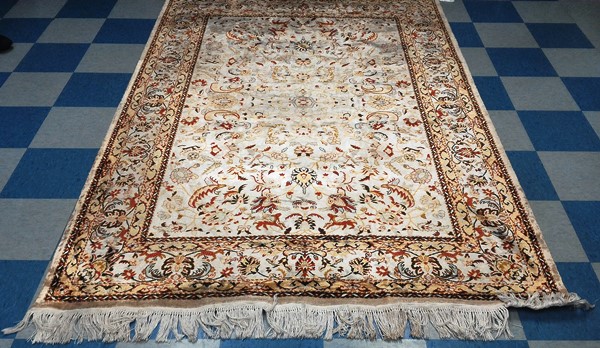Rashtizadeh Master Workshop of Qum

Rashtizadeh Master Workshop of Qum Rashtizadeh Vagireh Sene Sanandaj, Rug- MRQ89299 Since 1940 the best known of the great houses of Qum is that of Rashtizadeh. When we say Rashtizadeh we include the work of two famous weavers; the fathee Ali Rashtizadeh and his son Reza Tajerrashti (Rashtizadeh). The work of the father Ali Rashtizadeh is much like the story of Qum itself. It was much simpler 60 some years ago but has become far grander and more magnificent as the years go by. An older Rashtizadeh rug in a Caucasian pattern from Adabi of Tysons Corner. The early rugs from Rashtizadeh were simpler and less ambitious then what we see today but they are still highly desired by collectors. A recent rug from the Master Workshop of Rashtizadeh, “Koomehi” a Silk Qum Rug As we can see in this rug the complexity of design as well as the originality of the design has increased exponentially without losing any of the charm of the earlier rugs. Related Link: The Holy ci



